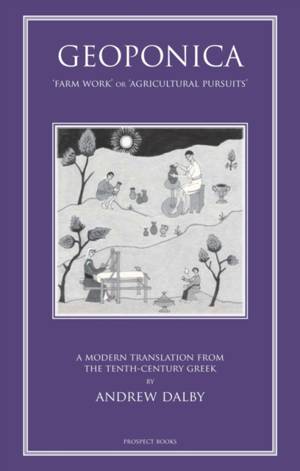
- Afhalen na 1 uur in een winkel met voorraad
- Gratis thuislevering in België vanaf € 30
- Ruim aanbod met 7 miljoen producten
- Afhalen na 1 uur in een winkel met voorraad
- Gratis thuislevering in België vanaf € 30
- Ruim aanbod met 7 miljoen producten
Zoeken
Geoponika - Farm Work
A Modern Translation of the Roman and Byzantine Farming Handbook
Andrew Dalby
Hardcover | Engels
€ 66,95
+ 133 punten
Omschrijving
Geoponika is one of the most celebrated texts to come out of the Byzantine renaissance promoted by the 10th-century emperor Constantine VII Porphyrogenitus. It was a gathering together of many classical and post-classical agricultural works, from Pliny in ancient Rome to the 7th-century Cassianus Bassus and the 4th-century Vindonius Anatolius. Many of these no longer survive, making the Geoponika the more valuable. It is a source both for ancient Roman agricultural practice in the West, and for understanding Near Eastern agriculture and what went on in Byzantine Anatolia. It was once translated into English, in the early 19th century, but has usually only been accessible to scholars of Greek. The history of the manuscript is extremely complicated. Andrew Dalby provides a modern and intelligent translation. He does not explore in any detail textual matters, wishing to concentrate on questions of agriculture and food production (meanwhile a definitive Greek text is in preparation elsewhere). This will be an essential tool for students of the classical and medieval worlds.
Specificaties
Betrokkenen
- Auteur(s):
- Uitgeverij:
Inhoud
- Aantal bladzijden:
- 320
- Taal:
- Engels
Eigenschappen
- Productcode (EAN):
- 9781903018699
- Verschijningsdatum:
- 1/03/2011
- Uitvoering:
- Hardcover
- Formaat:
- Genaaid
- Afmetingen:
- 147 mm x 239 mm
- Gewicht:
- 748 g

Alleen bij Standaard Boekhandel
+ 133 punten op je klantenkaart van Standaard Boekhandel
Beoordelingen
We publiceren alleen reviews die voldoen aan de voorwaarden voor reviews. Bekijk onze voorwaarden voor reviews.











